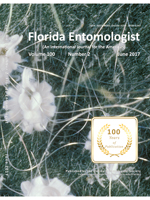In Brazil, pastures of Brachiaria grasses are often attacked by the spittlebug Mahanarva spectabilis (Distant) (Hemiptera: Cercopidae). Biological control of this pest insect is rarely used, in part because of a lack of diversity in commercialized pathogens effective against such pests. However, fungal infection of M. spectabilis has been noted in some tropical silvopastoral systems, which rarely have problems with pest insects. This study surveyed the fungi found in association with M. spectabilis in a silvopastoral system in Brazil and made a preliminary assessment of their virulence. Infected spittlebugs were collected in a silvopastoral system in Brazil, from which 5 types of fungi were isolated and identified by morphological analysis. Conidia of each wild fungus and a commercial strain of Metarhizum anisopliae (Metschn.) Sorokin (Clavicipitaceae) were diluted in a 1% NaCl solution at a concentration of 1×104 conidia per mL. In the laboratory, eggs and nymphs of M. spectabilis were placed in acrylic boxes within a climate-controlled chamber at 25 °C. In a non-acclimatized greenhouse, eggs and nymphs were placed on potted Brachiaria decumbens Stapf (Poaceae). Solutions of the 6 fungi and a control (pure saline) were applied to M. spectabilis in both conditions (acrylic box in laboratory and potted Brachiaria in a greenhouse). The most virulent fungi (UFMG 11443 and 11444) caused more than 90% of unviable eggs and mortality of nymphs. Other fungi tested (UFMG 11440, 11441, and 11442) were equally or more effective than the commercial M. anisopliae, causing over 50% unviable eggs or nymph mortality. All isolated fungi showed potential for use as biological control agents against M. spectabilis.
How to translate text using browser tools
1 June 2017
Prospection and Fungal Virulence Associated with Mahanarva spectabilis (Hemiptera: Cercopidae) in an Amazon Silvopastoral System
Michelle Oliveira Campagnani,
Wellington Garcia Campos,
Soraya Sander Amorim,
Luiz Henrique Rosa,
Alexander Machado Auad,
Mauroni Alves Cangussú,
Rogério Martins Maurício

Florida Entomologist
Vol. 100 • No. 2
June 2017
Vol. 100 • No. 2
June 2017
biological control
cigarrinha-das-pastagens
controle biológico
entomopathogenic fungus
fungos entomopatogênicos
mortalidade
mortality




